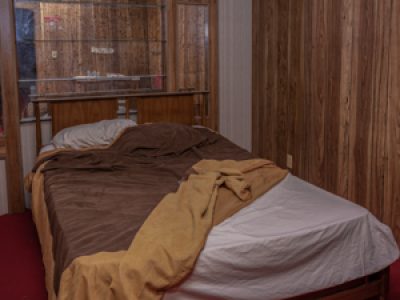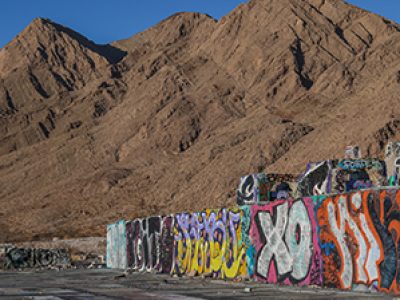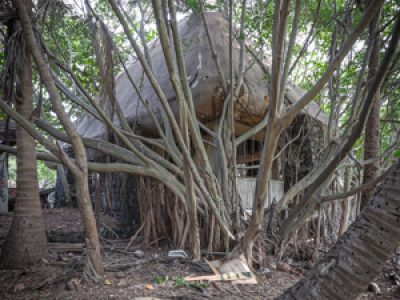Neskowin Ghost Forest
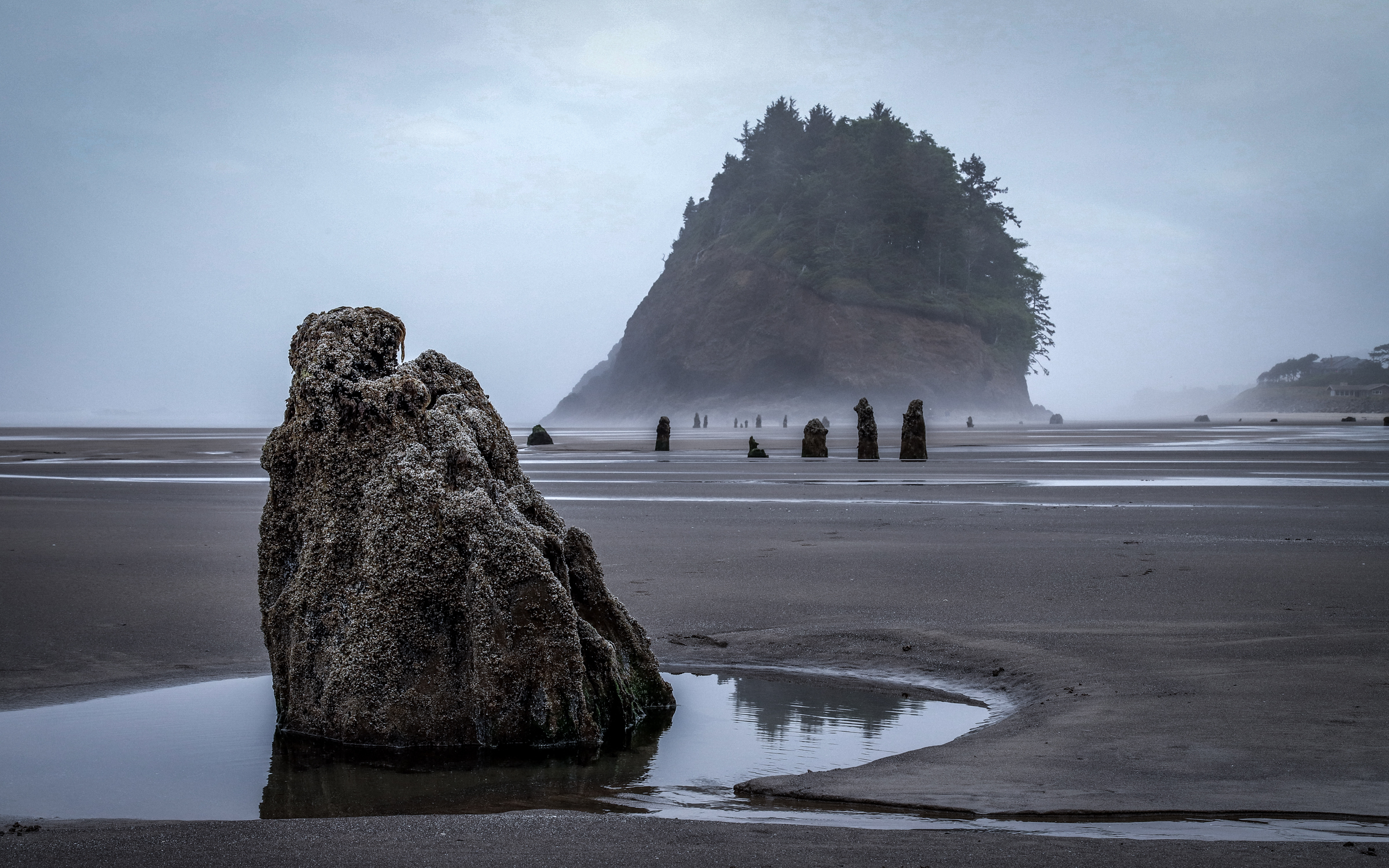
It’s the first light of daybreak on the small beach in Neskowin, a pocket of beach on the northern Oregon Coast that is easy to pass completely owing to the highway only touching a single market’s parking lot as it weaves through.
Chill air blows slowly over silhouettes of dozens of stoic figures rising from the shore’s wet surface. For these hours the waves have retreated, and the emerging daylight begins to reveal an apparition in the hazy luminance.
It’s called the Neskowin Ghost Forest, and while aptly describing this scene’s appearance, the name begets a trend lying all along the Oregon and Washington coastline: once living forests that were suffocated and ultimately preserved beneath sand and water.
The Cascadia subduction zone covers much of the coastline of the American Pacific Northwest, where much of the Juan de Fuca tectonic plate continues to slowly slide beneath the North American plate. Past earthquakes and tsunamis around this part of the Pacific Ocean, including the last major recorded earthquake to affect the area – a magnitude 8+ quake in the winter of the year 1700 – have been responsible for bringing floods of seawater into Oregon’s estuary forests, drowning soil and roots beneath salt and sand. And while theories posit that the area’s coastal ghost forests (there are nearly 40 in all along the Washington and Oregon coast) were created by a slower gradual dune encroachment, what all of the ghost forests share is that once-healthy soil and trees have been found beneath the preserving sands.
While the process burying this area of Sitka spruce forest took place hundreds of years ago, it was only following a particular turbulent winter of El Niño storms in 1997 that the stumps emerged from beneath the sandy beach. Until then, especially harsh storms had sporadically revealed the trees to locals for a few days at a time until wind and sea reburied them. However since 1997, the darkened tree stumps are a constant feature on Neskowin’s shore.
Nearly one hundred stumps, standing in height up to several feet tall (a mere shadow of the trees’ former grandeur when they stood an estimated 150′-200′ tall and stretching up to 6′ in diameter), line the beach, most covered in barnacles, mussels and some providing habitat for crabs and sea stars that roll in and out with the tides.
And while eerie on foggy days and often empty owing to its remote location on a sparsely populated area of the coast, the ghost forest is actually disappearing as a result of the natural cycles that created it. Researchers believe that rising sea levels combine with constant tidal activity to erode more of the sand preserving the ghost forest, estimating that about one third of the stumps have disappeared from the shore in the time since serious cataloging began only a couple decades earlier.
Day emerges, settling its light through the gray veil of coastal Oregon fog. The slowly meandering waters of Slab Creek run from the surrounding landscape as the creek makes its way across the sand’s surface toward the sea. Ocean waves knock at those stumps furthest from Neskowin’s forested cliffs. The Ghost Forest, made up of trees up to 2000 years old, emerged from beneath the ground just over 20 years ago, to sustain intertidal life until it is once again taken or buried from the quiet shores. In the meantime, the preserved trees weave a surreal and eerie tapestry on this storm-shaped landscape.
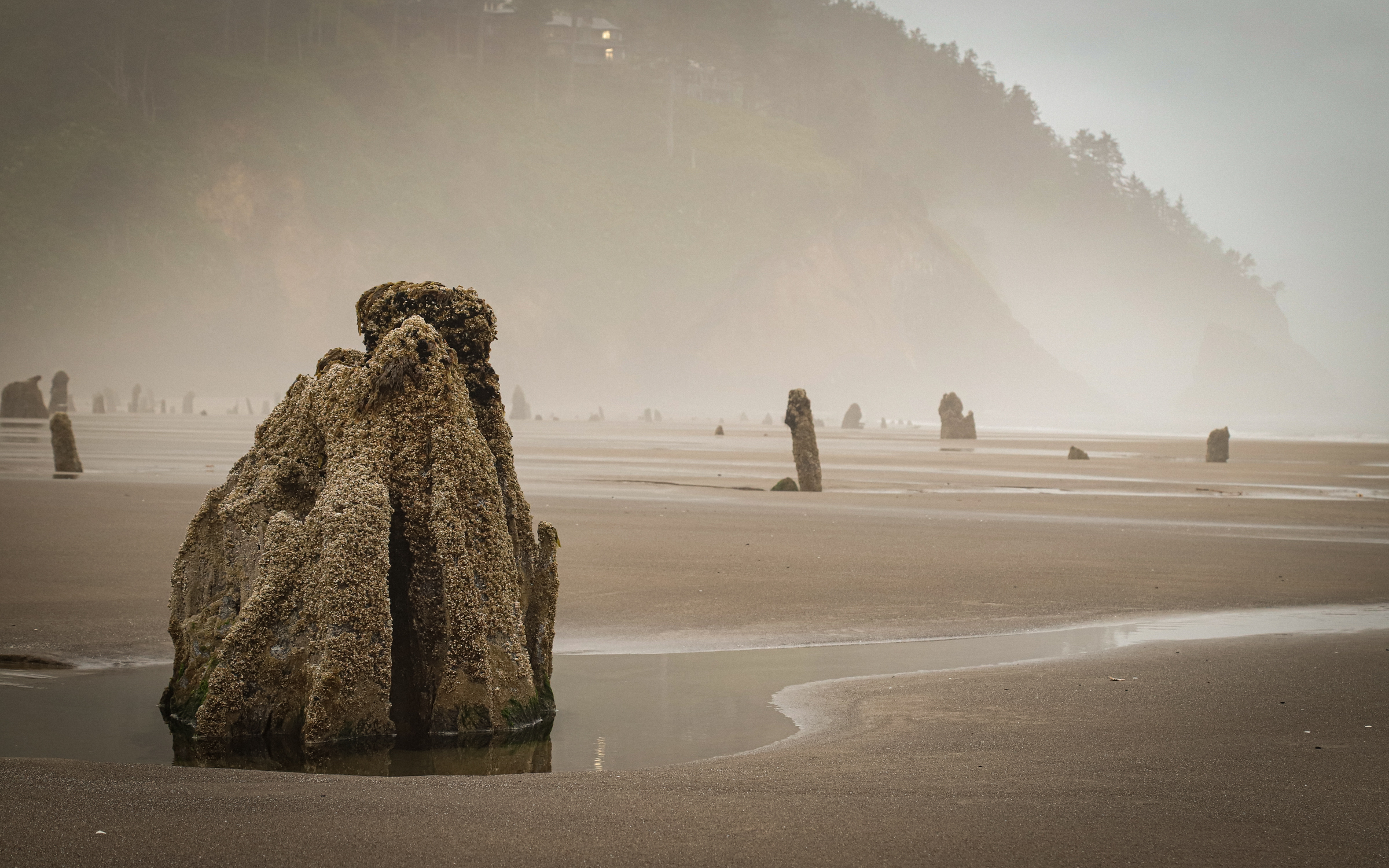
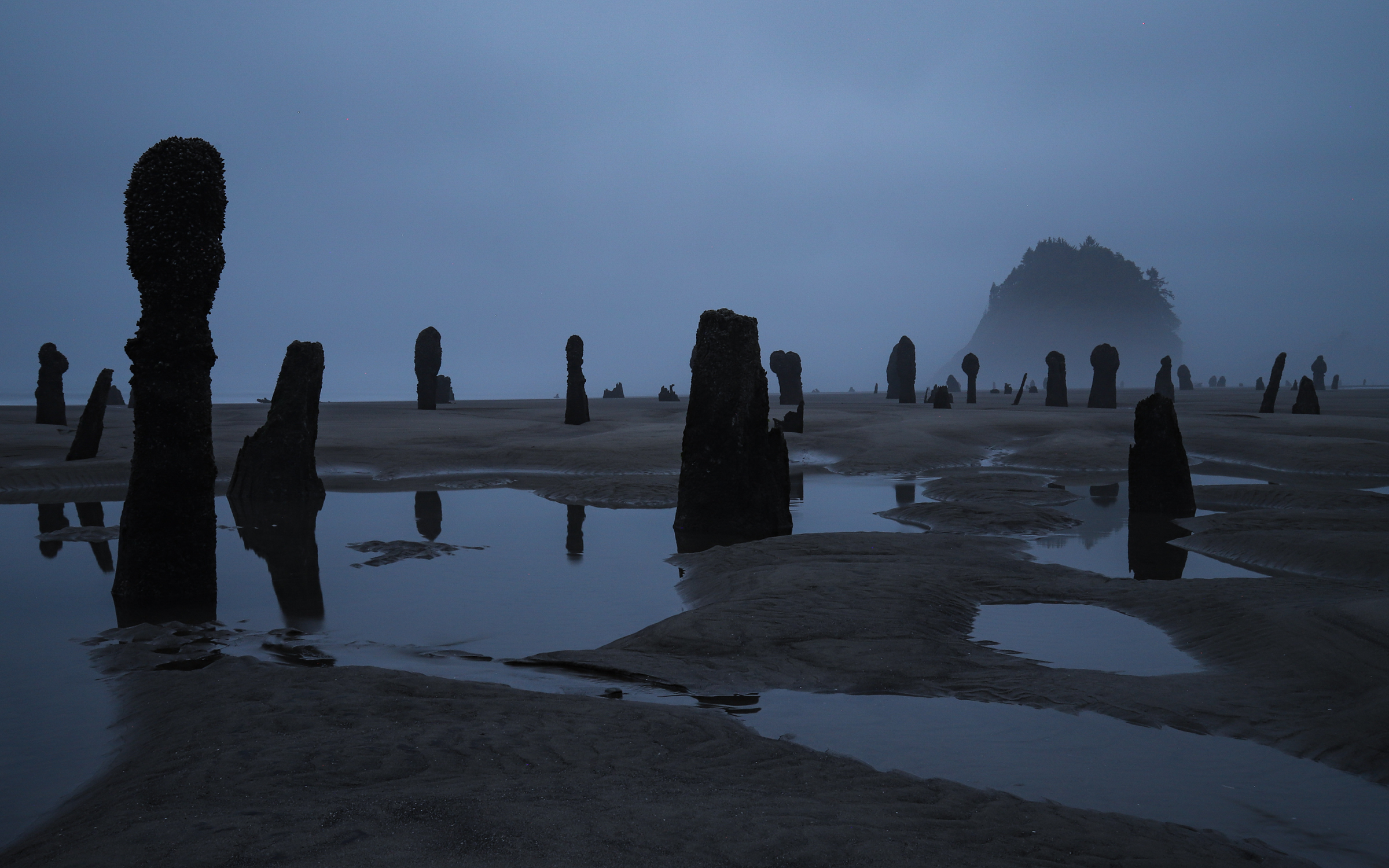
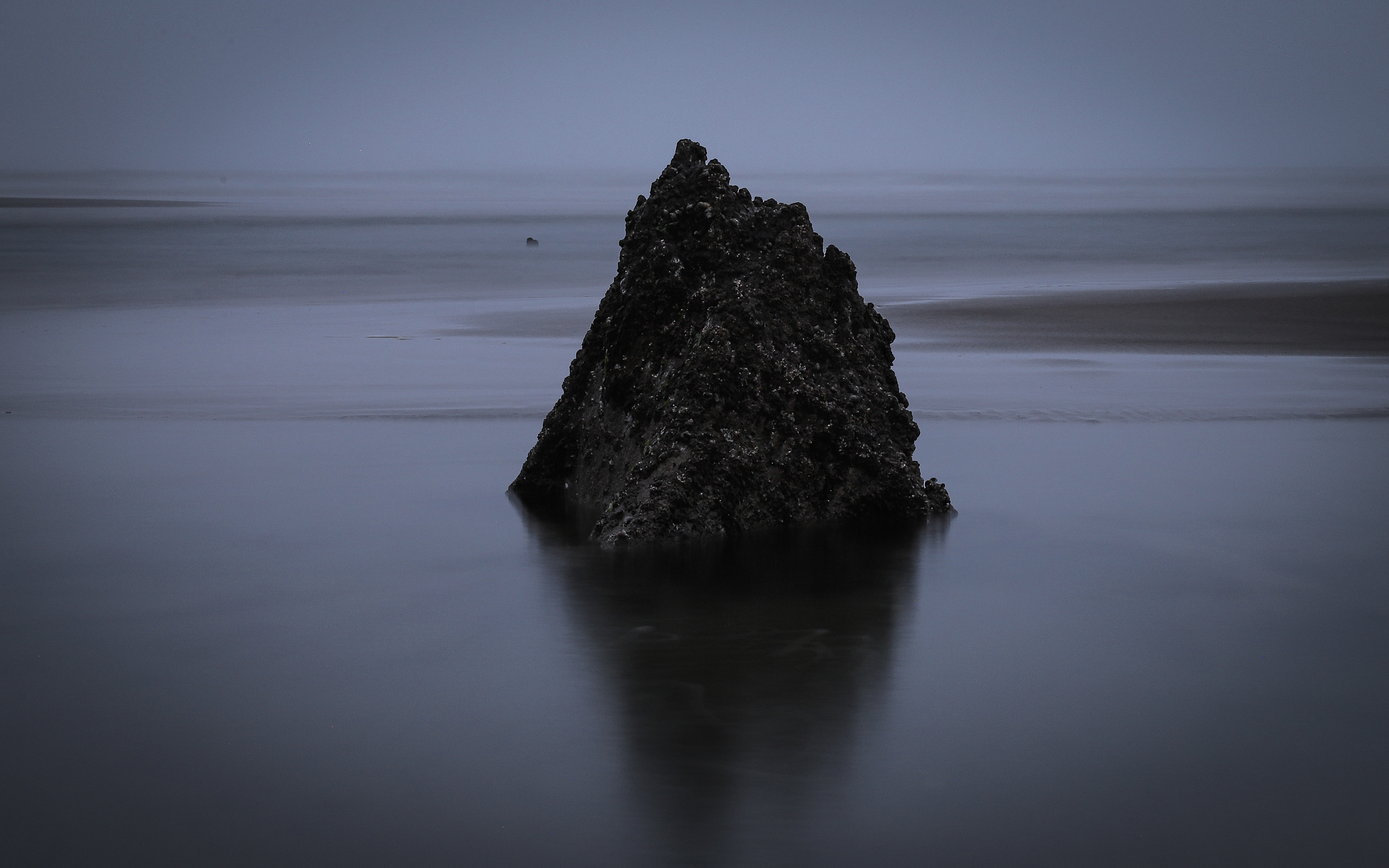
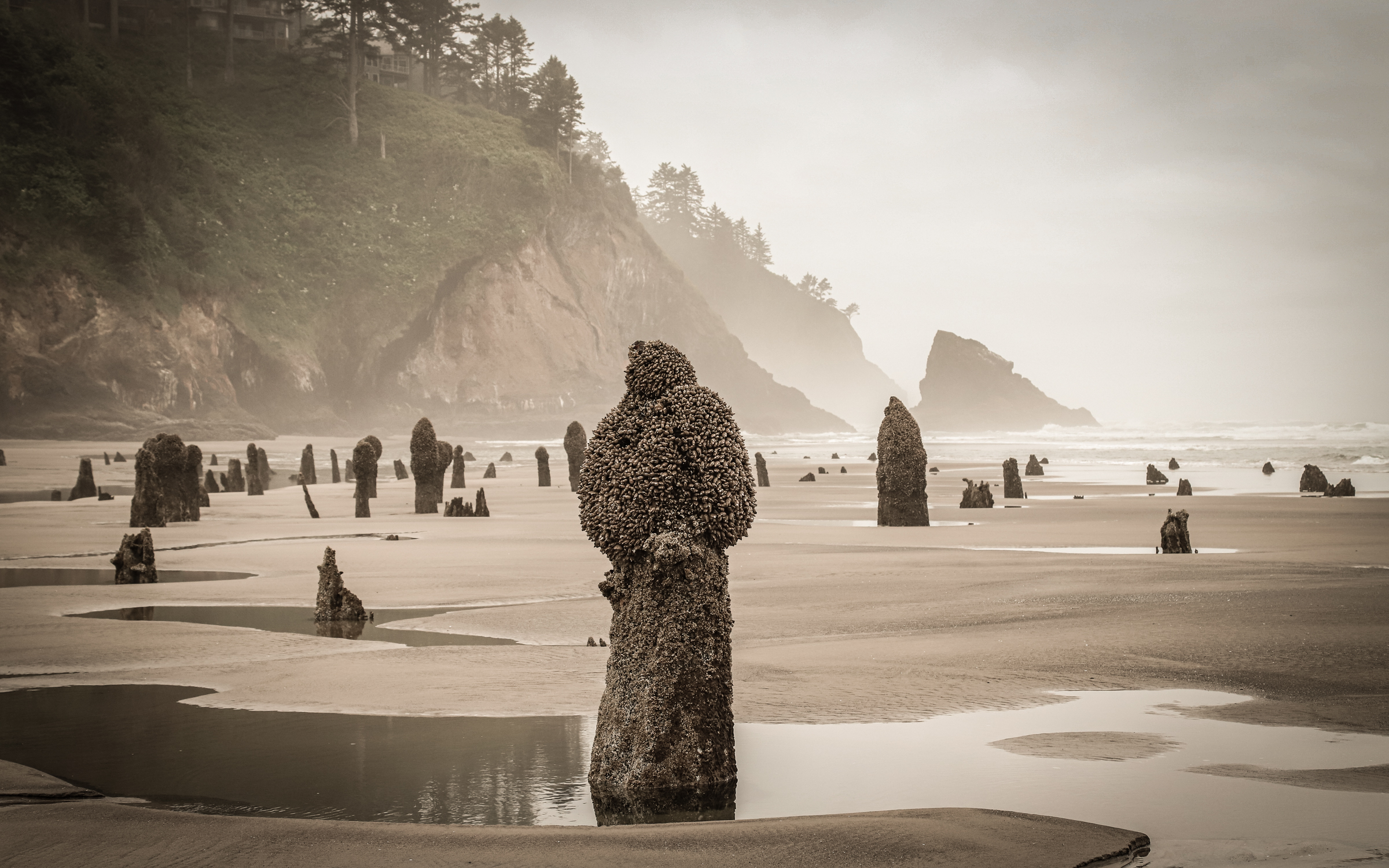
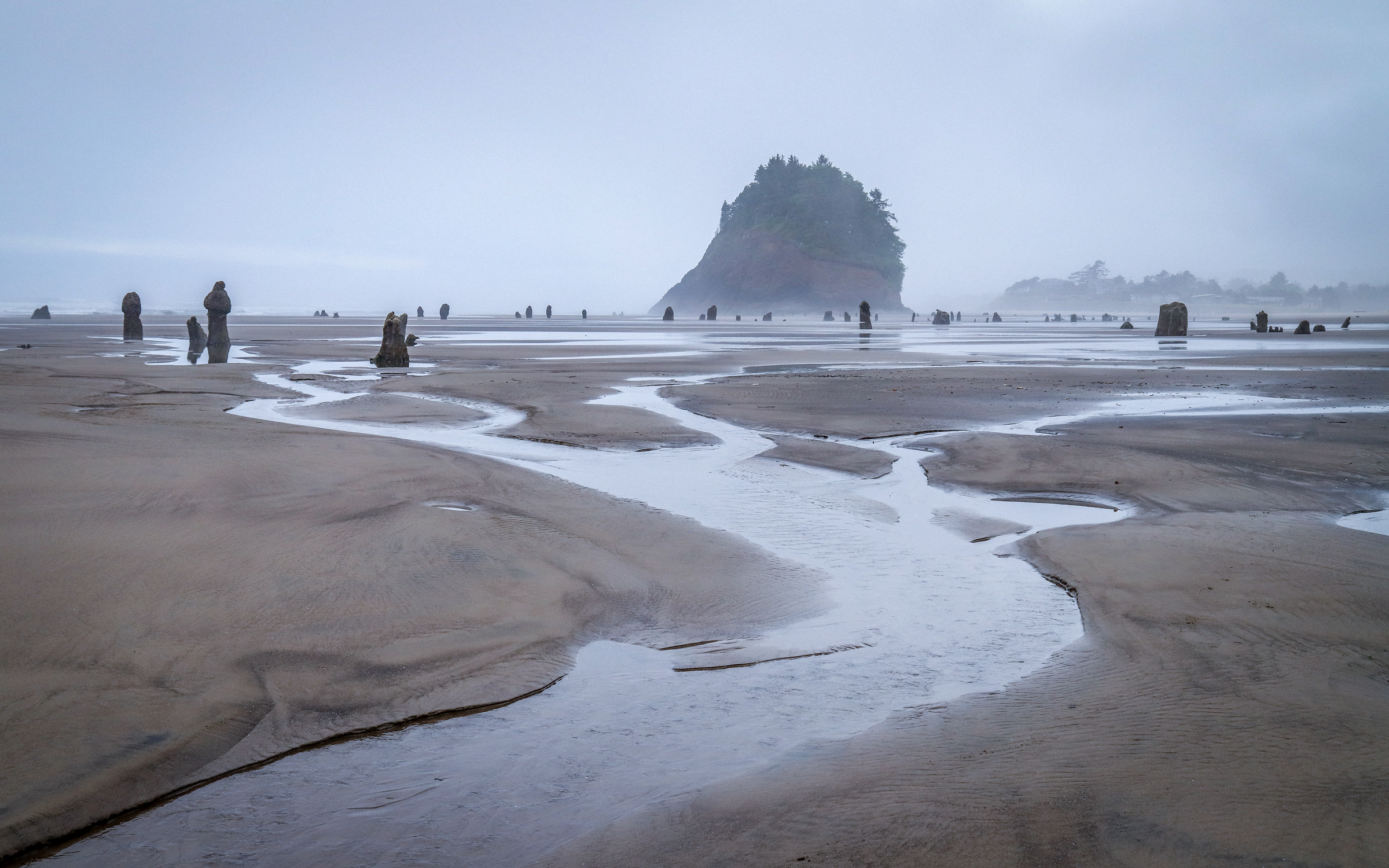
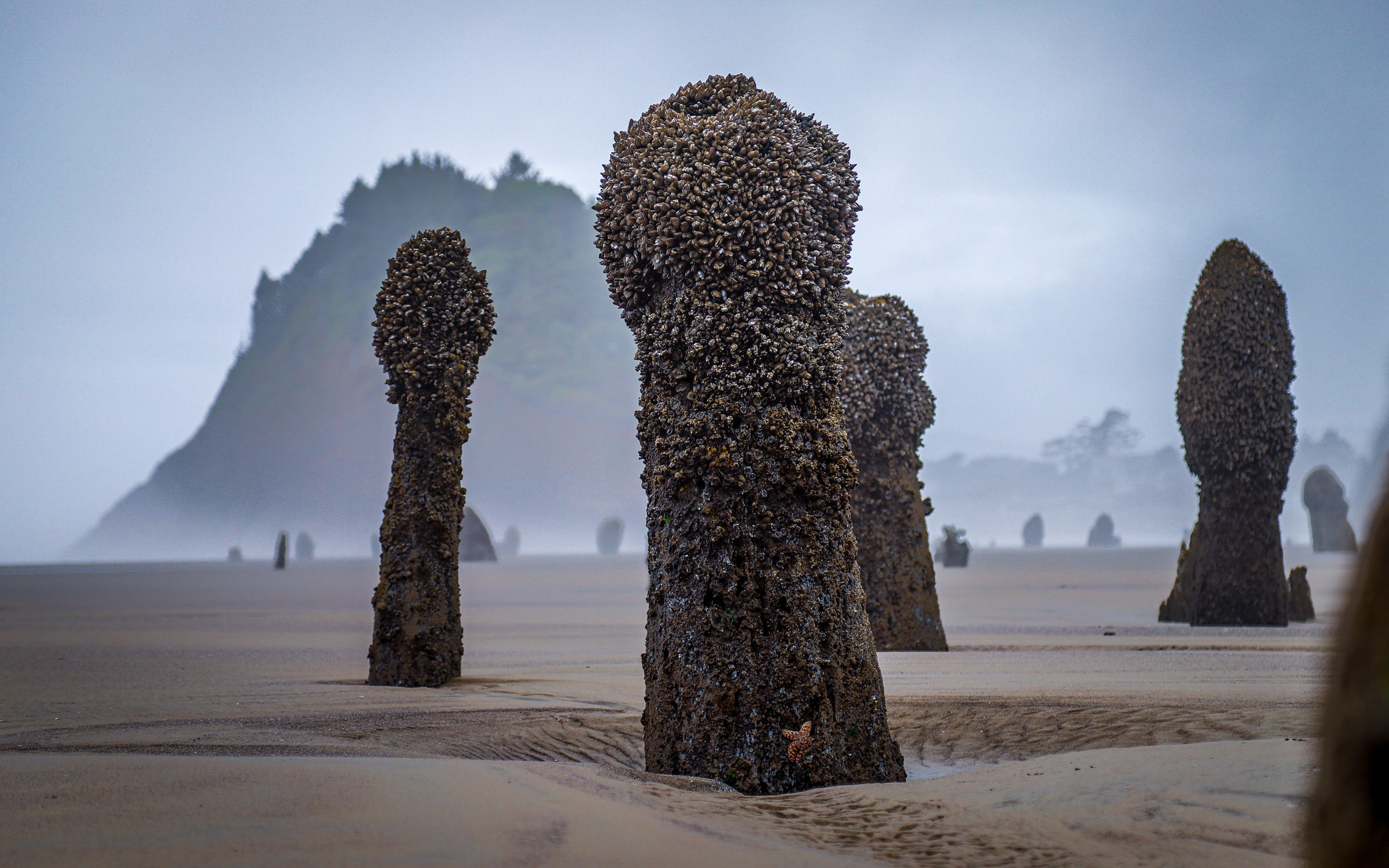
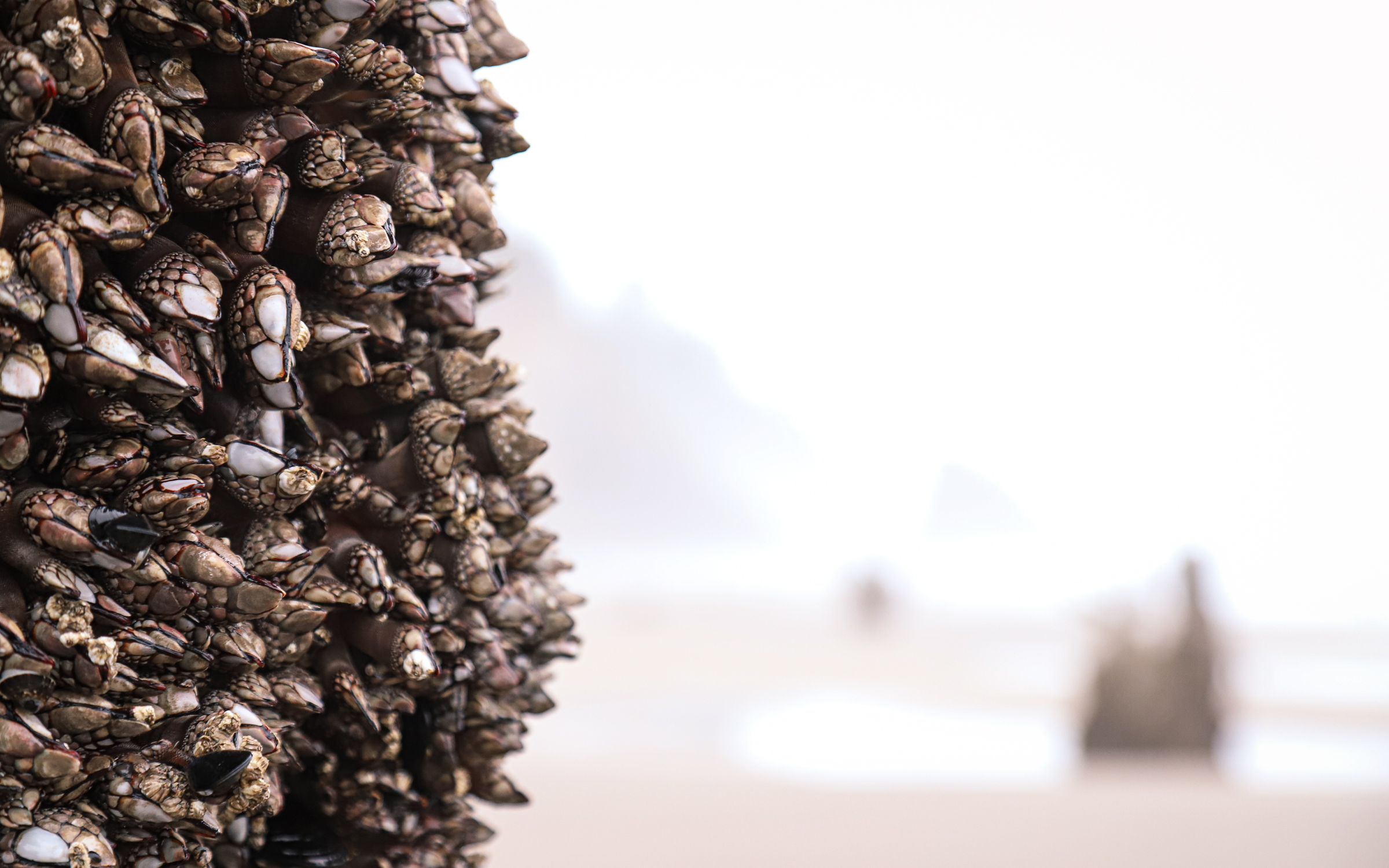
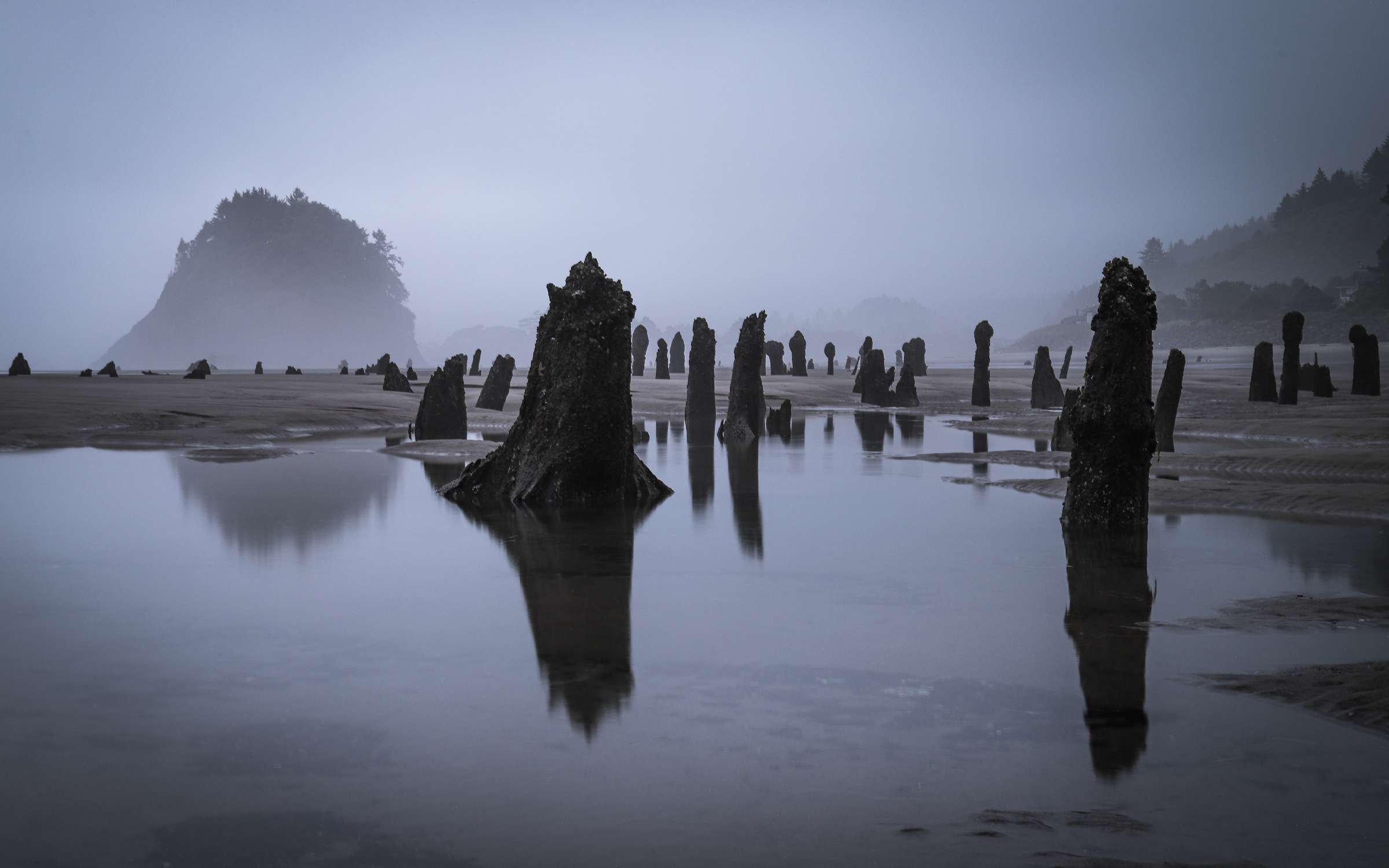
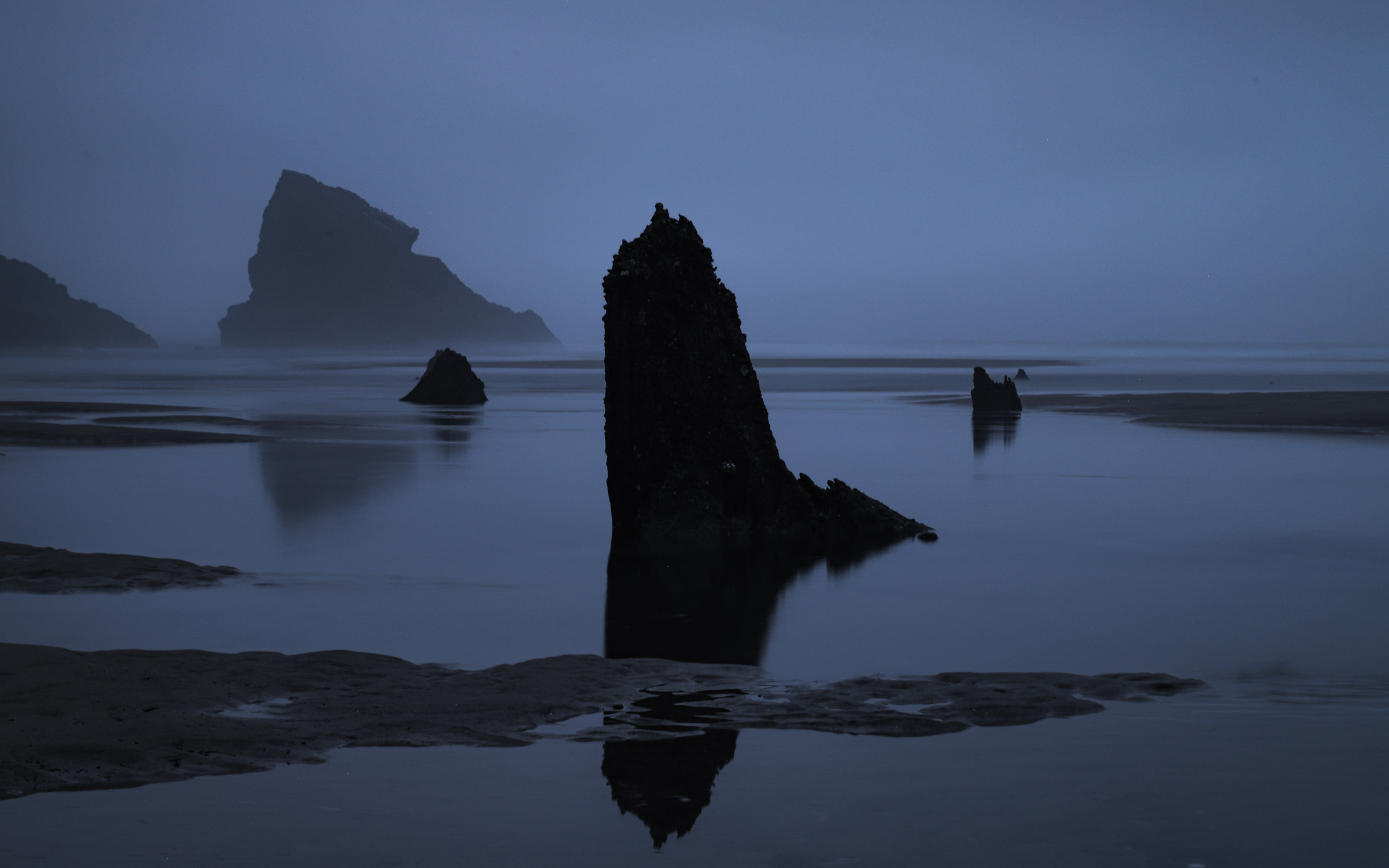
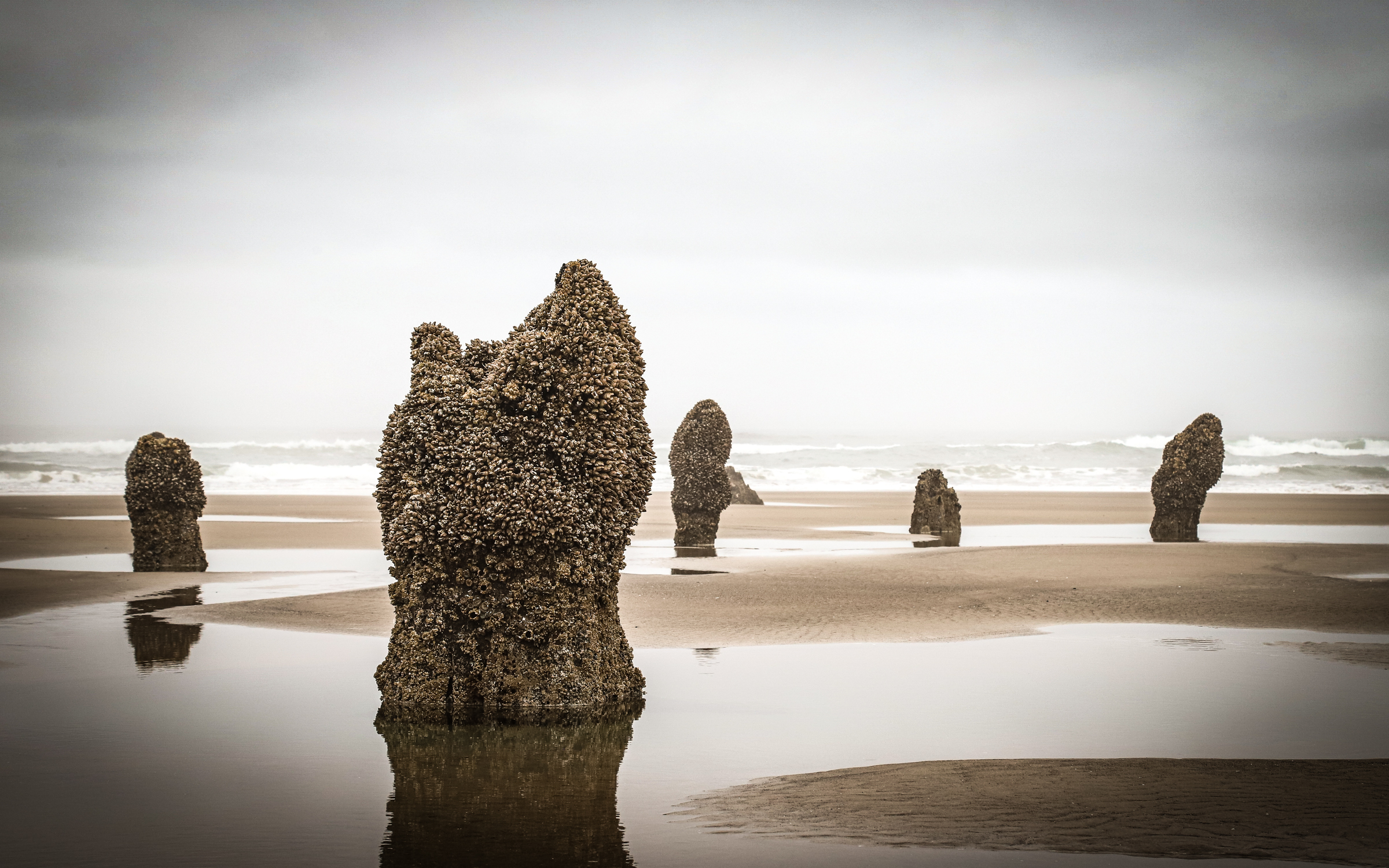
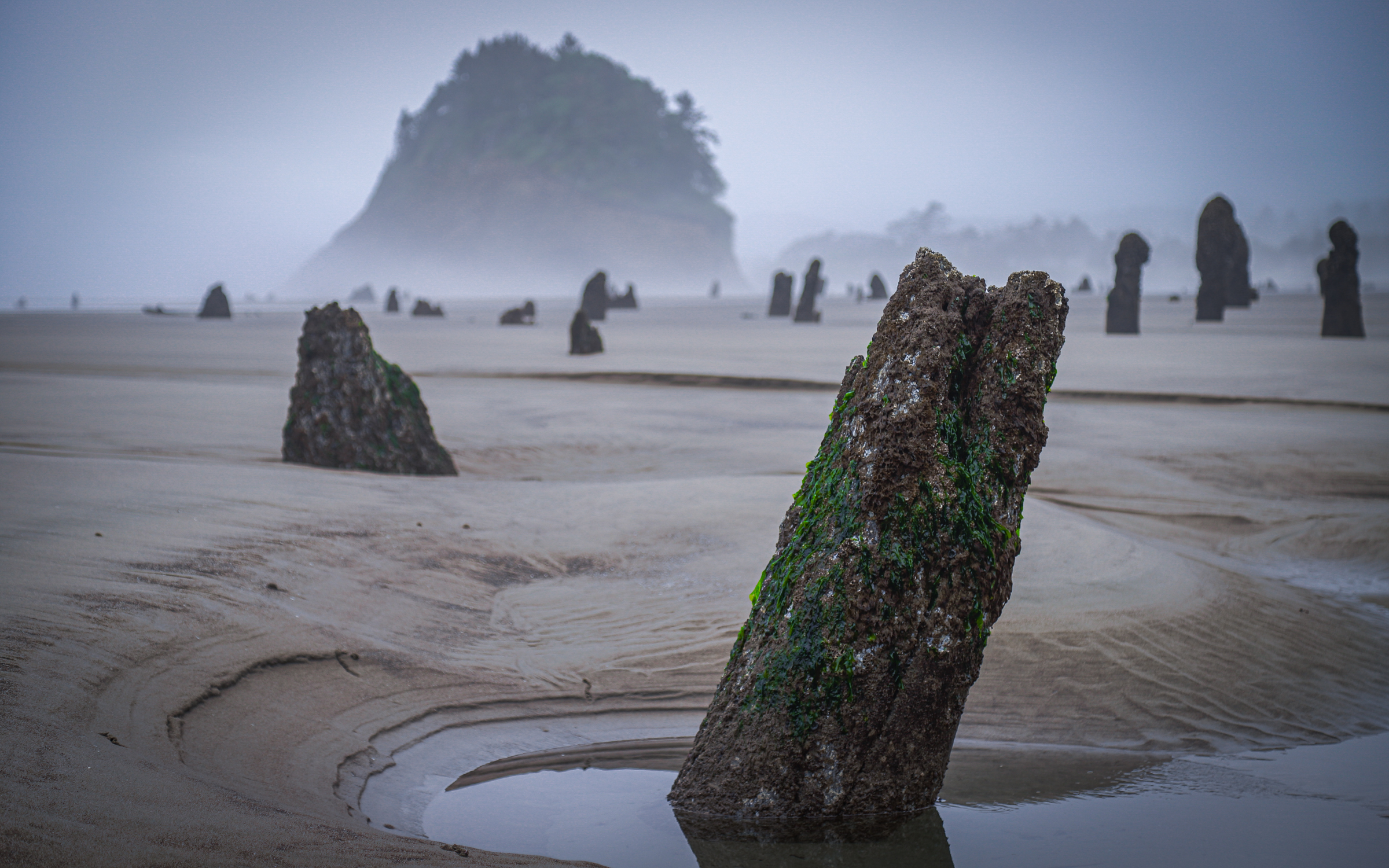
or see our other blog posts here.
